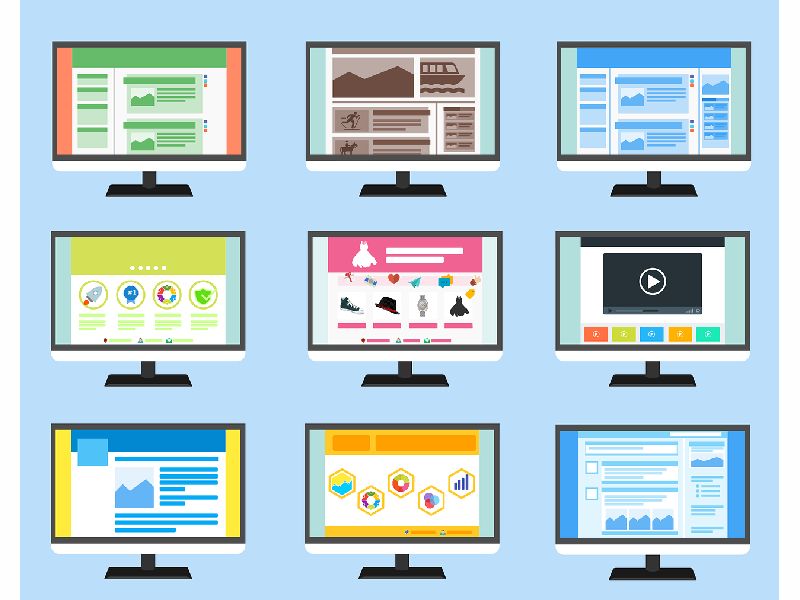Introduction
In the rapidly evolving landscape of app design, understanding the intricate relationship between culture and technology is paramount. As our digital world becomes increasingly interconnected, the need to create apps that resonate with diverse cultural backgrounds has never been more critical. In this article, we embark on a journey to explore the intersection of culture and technology in app design, offering a global perspective on how different cultural nuances shape user interactions with technology.
In today’s multicultural society, the ways in which individuals perceive and engage with technology are deeply influenced by their cultural upbringing, values, and societal norms. From communication preferences to user interface preferences, cultural factors play a significant role in shaping user behaviors and expectations. As app designers, it is essential to recognize and embrace this diversity, ensuring that our designs are inclusive and resonate with users from various cultural backgrounds.
Throughout this article, we will delve into the multifaceted impact of cultural diversity on app design. Drawing on real-world examples and case studies, we will examine how different cultures interact with technology and the implications for designing apps that cater to diverse user bases. By understanding the unique needs and preferences of users from various cultural backgrounds, designers can create more meaningful and effective app experiences.
Join me as we embark on a journey to explore the fascinating intersection of culture and technology in app design. Together, let’s unravel the complexities of designing apps that transcend cultural boundaries and resonate with users around the globe.
Understanding Cultural Influence on Technology Adoption
To comprehend the intersection of culture and technology in app design, it’s imperative to delve into how various cultures perceive and adopt technology. Cultural norms, values, and traditions significantly influence individuals’ attitudes towards technology, shaping their usage patterns and behaviors.
In many Western cultures, for instance, technology is often embraced as a tool for efficiency and convenience. People are accustomed to rapid technological advancements and readily integrate new digital tools into their daily lives. On the other hand, in some Eastern cultures, there may be a greater emphasis on communal values and social harmony, leading to different priorities in technology adoption. Understanding these cultural nuances is crucial for designing apps that resonate with diverse user bases.
In addition to cultural attitudes towards technology, accessibility and infrastructure also play a significant role in shaping technology adoption. In regions with limited internet access or technological infrastructure, users may interact with technology in different ways compared to those in more developed regions. For example, mobile-first design approaches may be more suitable for regions where smartphones are the primary means of accessing the internet.
Furthermore, socio-economic factors can impact technology adoption rates within a culture. Affordability, education levels, and access to resources all influence individuals’ ability to engage with technology. Designers must consider these factors when creating apps to ensure they are accessible and inclusive for users from all walks of life.
Case Study 1: WhatsApp in India
WhatsApp, a popular messaging app, provides an illuminating case study of how cultural factors influence technology adoption and app design. In India, where WhatsApp boasts over 400 million users, the app has become deeply embedded in the fabric of everyday life.
Cultural norms around communication and social interaction have played a significant role in WhatsApp’s success in India. In a country known for its strong emphasis on family ties and social connections, WhatsApp’s user-friendly interface and features such as group chats and multimedia sharing have resonated with Indian users, facilitating seamless communication and fostering a sense of community.
Furthermore, WhatsApp’s approach to localization has been crucial in catering to the diverse linguistic and cultural landscape of India. The app supports multiple Indian languages, allowing users to communicate in their preferred language, which is essential in a country with hundreds of languages and dialects spoken across different regions.
Additionally, WhatsApp’s lightweight design and low data usage have made it accessible to users across socio-economic backgrounds, including those with limited access to high-speed internet or expensive smartphones. This inclusive approach has contributed to WhatsApp’s widespread adoption across urban and rural areas alike.
Overall, WhatsApp’s success in India highlights the importance of understanding cultural nuances and tailoring app design to meet the needs and preferences of diverse user bases. By prioritizing simplicity, localization, and accessibility, WhatsApp has become an indispensable tool for communication in India, demonstrating the power of culturally responsive app design.
Case Study 2: Duolingo’s Global Expansion
Duolingo, a language-learning app, provides another compelling case study of how cultural factors shape technology adoption and app design on a global scale. As Duolingo sought to expand its user base beyond English-speaking markets, it encountered unique challenges and opportunities in designing for diverse cultural contexts.
One key challenge was adapting Duolingo’s language courses to meet the specific needs and preferences of users from different cultural backgrounds. This involved not only translating course content into multiple languages but also incorporating culturally relevant examples, idioms, and expressions to make the learning experience more engaging and relatable for users.
Furthermore, Duolingo recognized the importance of cultural sensitivity in its marketing and user acquisition strategies. The app tailored its advertising campaigns to resonate with the cultural values and aspirations of target audiences in various regions, helping to drive user engagement and retention.
In addition to cultural adaptation, Duolingo prioritized accessibility and inclusivity in its app design to cater to users from diverse socio-economic backgrounds. The app’s gamified learning approach and free-to-use model have made language learning accessible to millions of users worldwide, regardless of their financial means or educational background.
Overall, Duolingo’s global expansion demonstrates the importance of cultural awareness and adaptability in app design. By embracing cultural diversity and tailoring its app to meet the needs of users from different cultural backgrounds, Duolingo has successfully expanded its reach and impact on a global scale.
Design Strategies for Culturally Responsive Apps
Having explored how cultural factors influence technology adoption and app design through our case studies, let’s now delve into practical design strategies for creating culturally responsive apps. By embracing cultural diversity and incorporating these strategies into the design process, developers can ensure their apps resonate with users from various cultural backgrounds.
1.User Research and Persona Development: Conduct thorough user research to understand the cultural preferences, behaviors, and needs of your target audience. Create user personas that represent different cultural segments, considering factors such as language, values, and communication styles.
2.Localization and Language Support: Provide multilingual support and localize content to cater to users from different linguistic backgrounds. Translate app interfaces, content, and instructions into the languages spoken by your target audience, ensuring clarity and cultural relevance.
3.Cultural Sensitivity in Design Elements: Pay attention to cultural symbols, colors, and imagery used in app design. Avoid culturally insensitive or offensive representations and instead incorporate elements that resonate with your target audience’s cultural values and aesthetics.
4.Customization and Personalization: Allow users to customize their app experience based on their cultural preferences and interests. Provide options for users to choose language settings, cultural themes, or content preferences that align with their cultural background.
5.Inclusive Design Practices: Adopt inclusive design principles to ensure accessibility and usability for users from diverse backgrounds. Consider factors such as literacy levels, visual impairments, and digital literacy when designing app interfaces and interactions.
6.Cultural Sensitivity Training for Designers: Educate designers and developers about cultural differences and sensitivities to avoid unintentional biases or stereotypes in app design. Encourage cross-cultural collaboration and feedback to ensure cultural authenticity and inclusivity.
7.User Testing Across Cultural Groups: Conduct user testing with diverse cultural groups to gather feedback and insights on app usability and cultural relevance. Incorporate user feedback into iterative design improvements to address cultural preferences and enhance user experience.
By integrating these design strategies into the app development process, developers can create culturally responsive apps that resonate with users from diverse cultural backgrounds. Embracing cultural diversity not only enhances user engagement and satisfaction but also fosters inclusivity and respect in the digital space.
Future Trends and Considerations
As technology continues to advance and our world becomes increasingly interconnected, the future of culturally responsive app design holds exciting possibilities and challenges. Here are some key trends and considerations to keep in mind:
1.AI-Powered Personalization: Artificial intelligence (AI) and machine learning technologies can enable personalized app experiences tailored to individual cultural preferences and behaviors. By analyzing user data and interactions, AI algorithms can adapt app content and features to better resonate with diverse cultural backgrounds.
2.Augmented Reality (AR) and Virtual Reality (VR): AR and VR technologies offer immersive experiences that transcend geographical boundaries, providing opportunities for cross-cultural interaction and learning. Designing culturally relevant AR/VR experiences can enhance user engagement and foster cultural understanding on a global scale.
3.Voice User Interfaces (VUI): Voice-activated interfaces are becoming increasingly popular, particularly in regions with low literacy rates or diverse linguistic backgrounds. Designing VUIs that support multiple languages and accents can improve accessibility and usability for users from diverse cultural backgrounds.
4.Ethical Design and Data Privacy: As app developers collect and analyze vast amounts of user data, ethical considerations around data privacy and security become paramount. Designing apps with robust privacy protections and transparent data practices is essential to build trust with users and comply with evolving regulatory frameworks.
5.Cross-Cultural Collaboration: Collaboration between designers, developers, and cultural experts from different regions can enrich the app design process and ensure cultural authenticity. Embracing diverse perspectives and incorporating feedback from cultural stakeholders can lead to more inclusive and culturally relevant app experiences.
6.Global Accessibility Standards: Adopting global accessibility standards such as the Web Content Accessibility Guidelines (WCAG) ensures that apps are usable by individuals with disabilities across cultural contexts. Designing apps with accessibility in mind promotes inclusivity and equal access to digital resources for all users.
7.Continued User Research and Adaptation: As cultures evolve and societal norms shift, ongoing user research and adaptation are essential to keep app designs culturally relevant. Regularly soliciting feedback from users from diverse cultural backgrounds and iterating app designs accordingly ensures that apps continue to meet the evolving needs and preferences of their audience.
By staying abreast of these trends and considerations, app developers can position themselves to create culturally responsive apps that resonate with users around the world. Embracing cultural diversity and leveraging technology to foster cross-cultural understanding can pave the way for more inclusive and impactful digital experiences in the future.
Conclusion
In conclusion, the intersection of culture and technology in app design presents both opportunities and challenges for developers seeking to create inclusive and culturally responsive digital experiences. By recognizing the influence of cultural factors on technology adoption and app usage, developers can design apps that resonate with diverse user bases and foster cross-cultural understanding.
Through case studies, we’ve seen how successful apps like WhatsApp and Duolingo have navigated cultural nuances to create impactful user experiences. By prioritizing localization, accessibility, and inclusivity, these apps have become indispensable tools for communication and learning on a global scale.
As we look to the future, it’s clear that the role of culture in app design will only continue to grow in importance. Emerging technologies like AI, AR/VR, and voice interfaces offer new possibilities for creating personalized and immersive app experiences that transcend cultural boundaries. However, ethical considerations around data privacy and inclusivity must also be carefully navigated to ensure that apps are respectful and inclusive of diverse cultural perspectives.
Ultimately, embracing cultural diversity in app design is not only a matter of good practice but also a reflection of our shared humanity. By fostering empathy, understanding, and inclusivity in our digital interactions, we can create a more connected and inclusive world for all users, regardless of their cultural background or geographic location. As designers and developers, let us continue to strive for excellence in creating culturally responsive apps that enrich lives and promote cross-cultural understanding.











